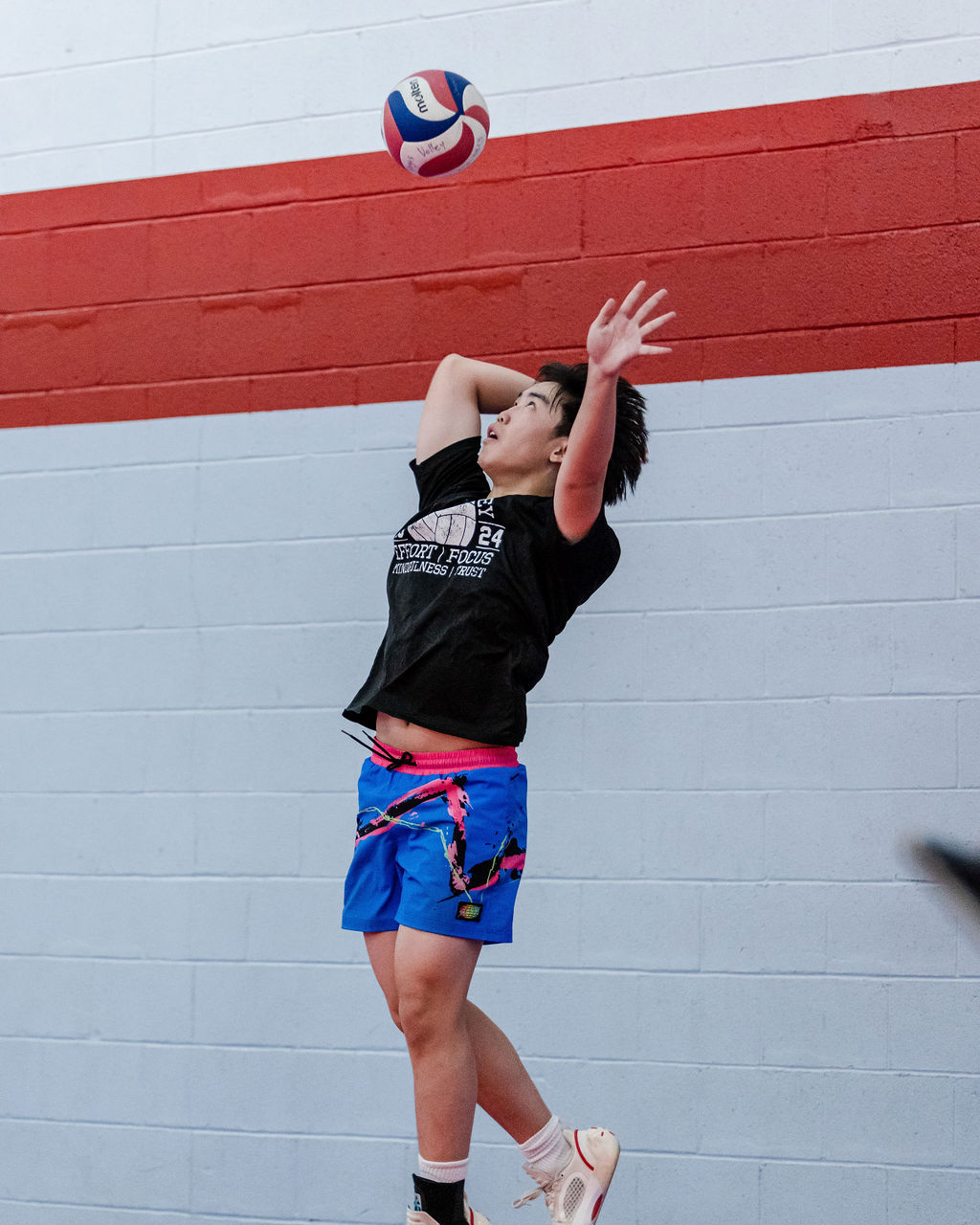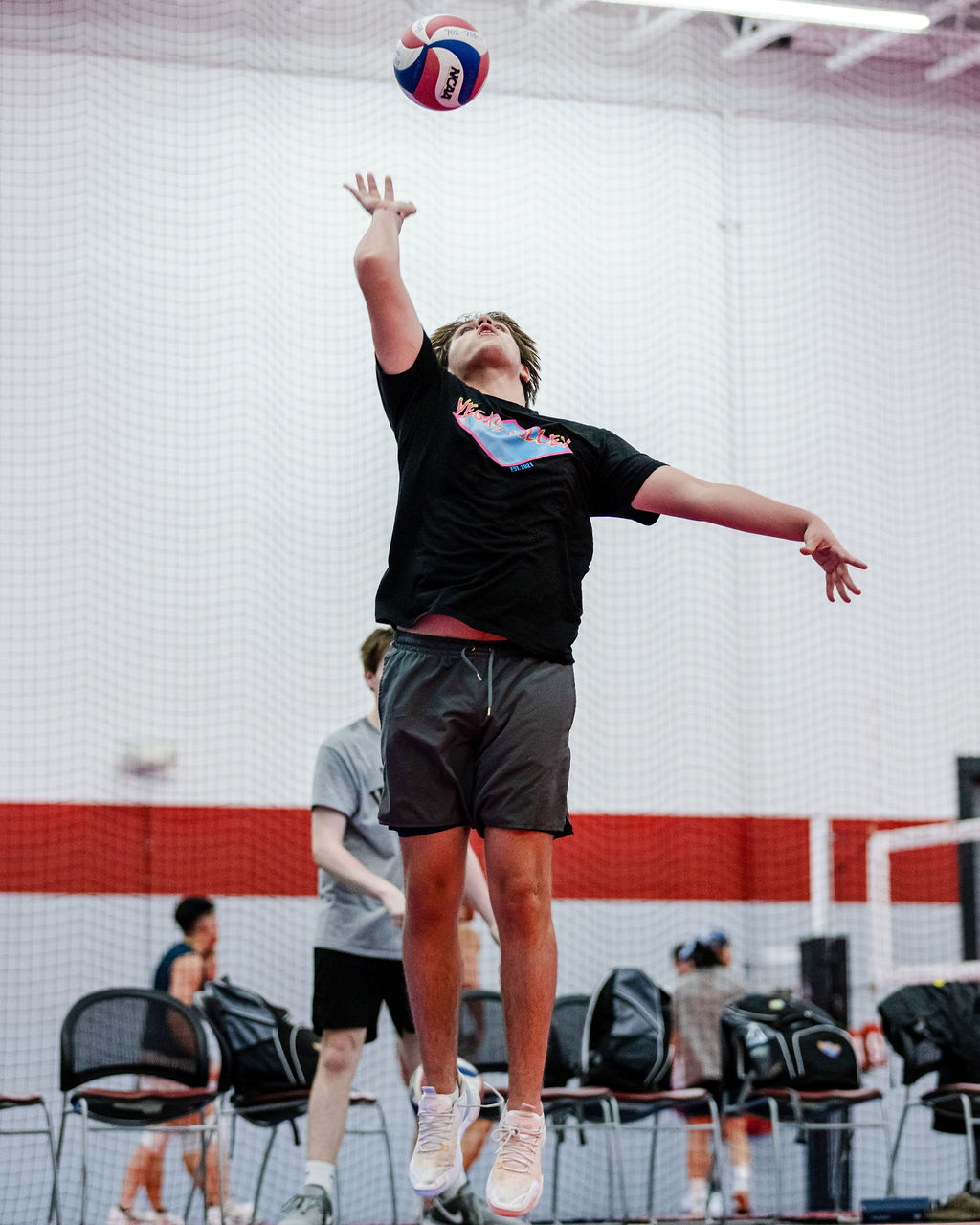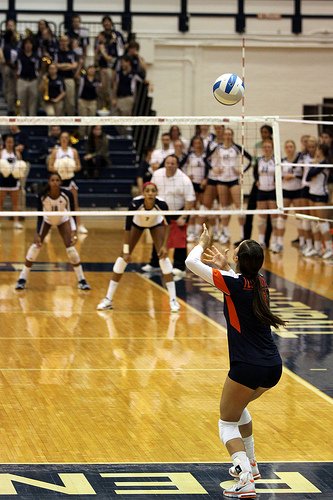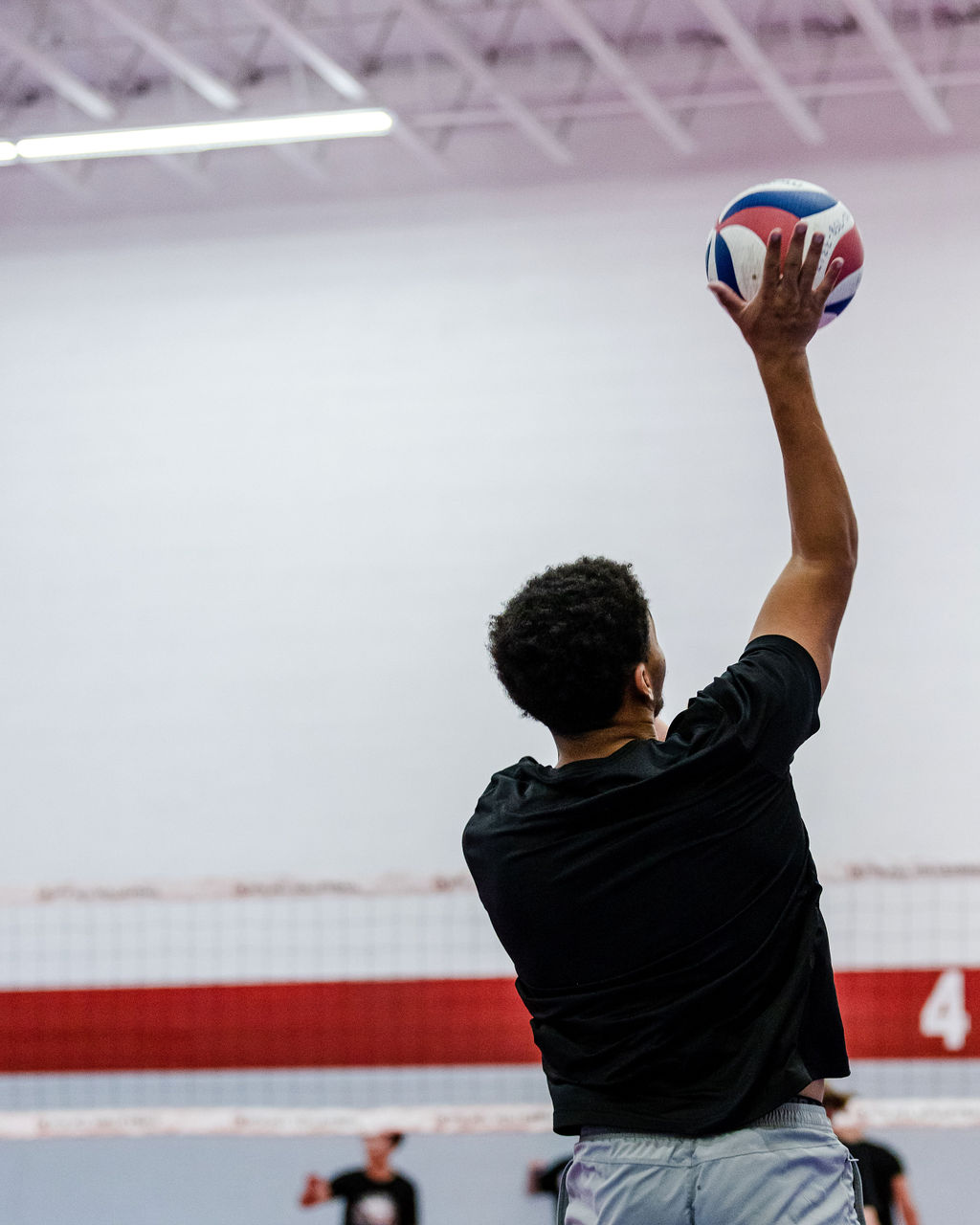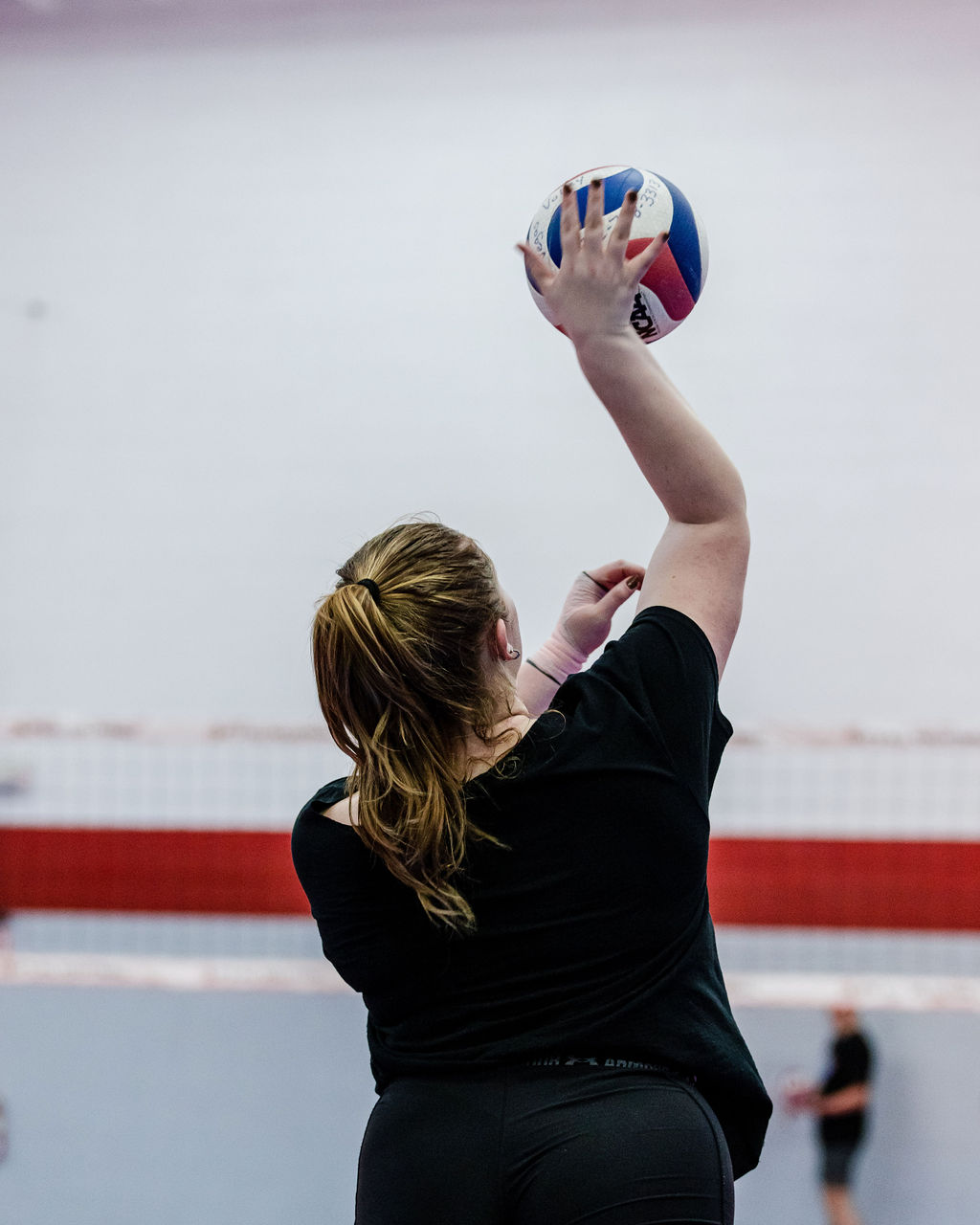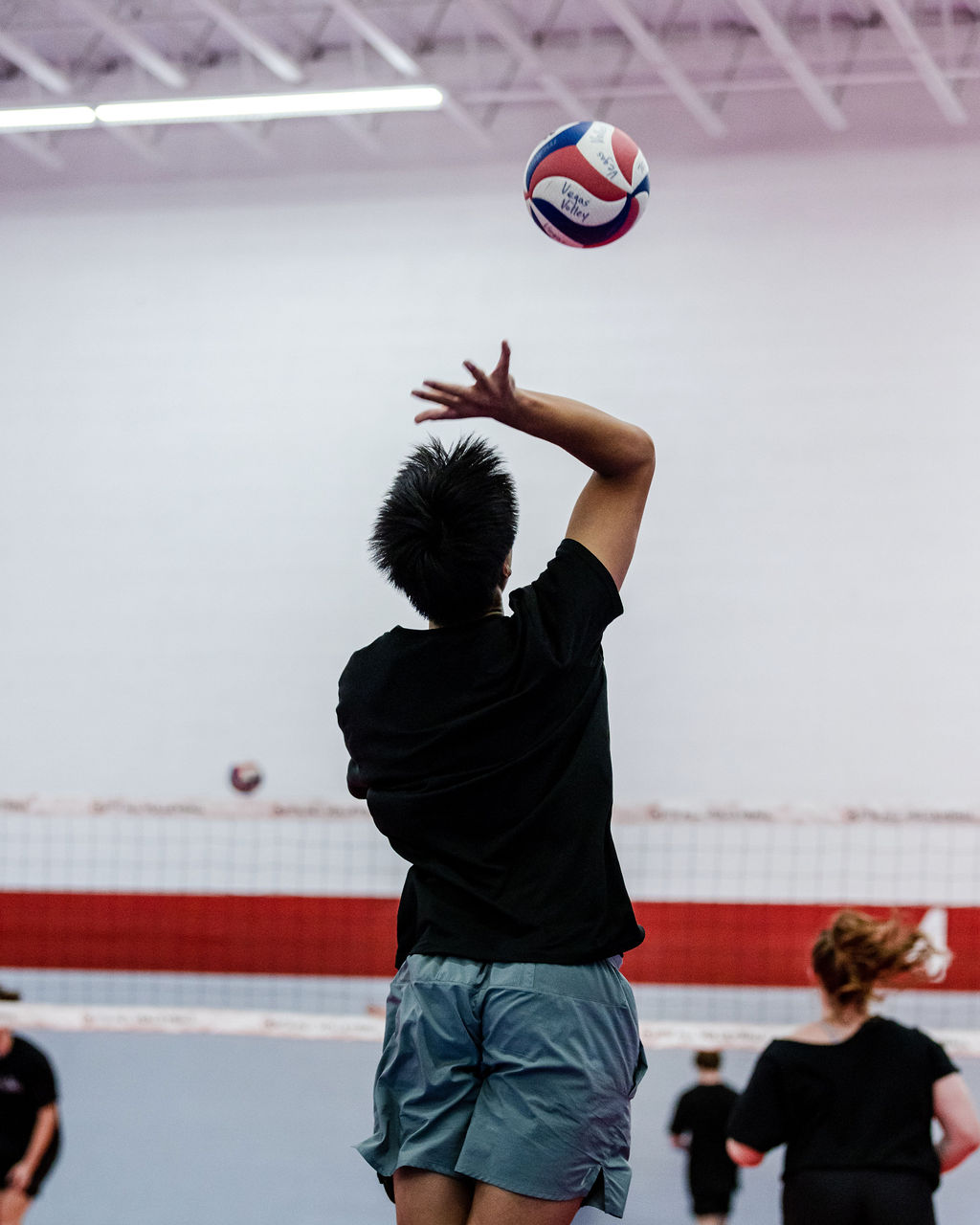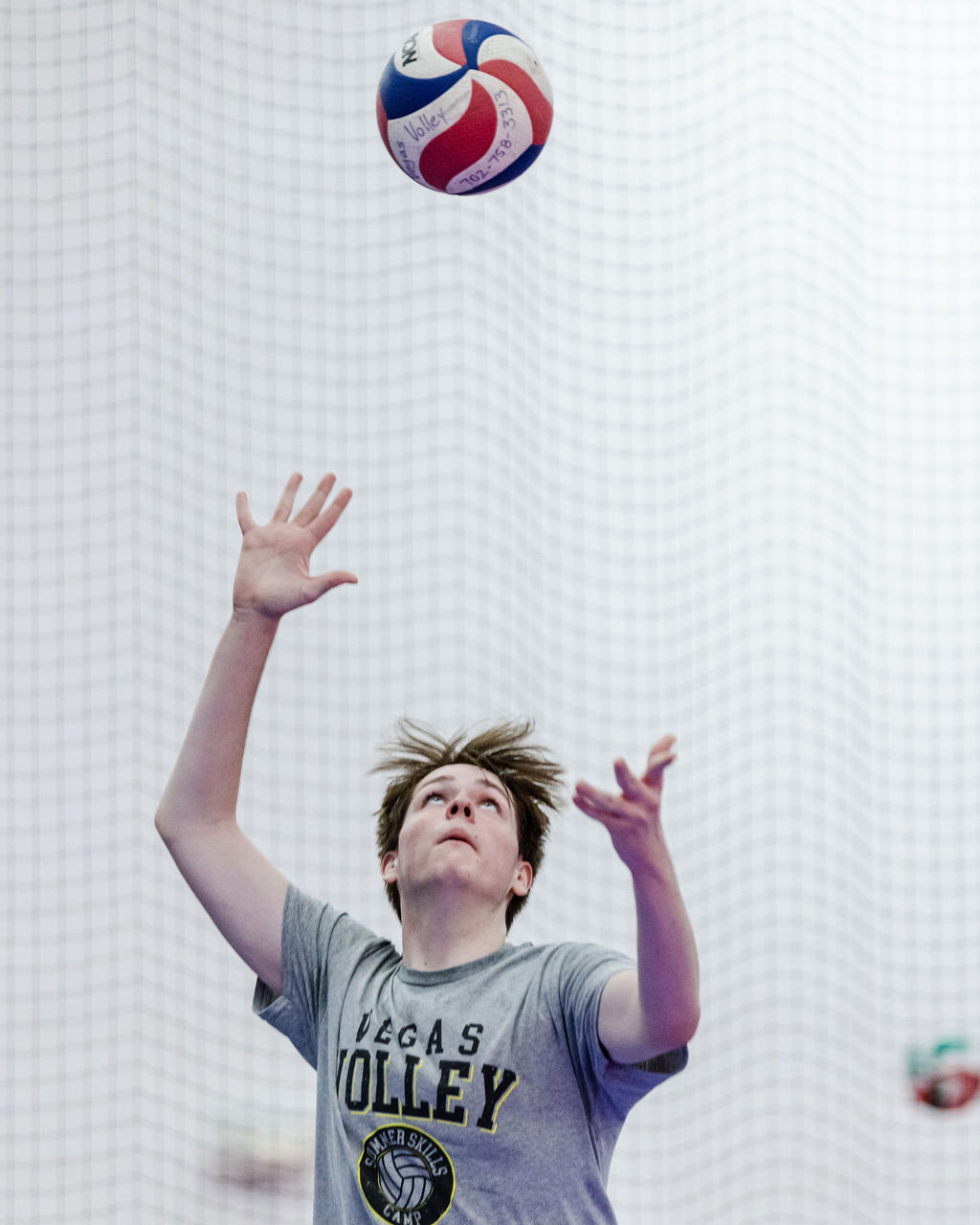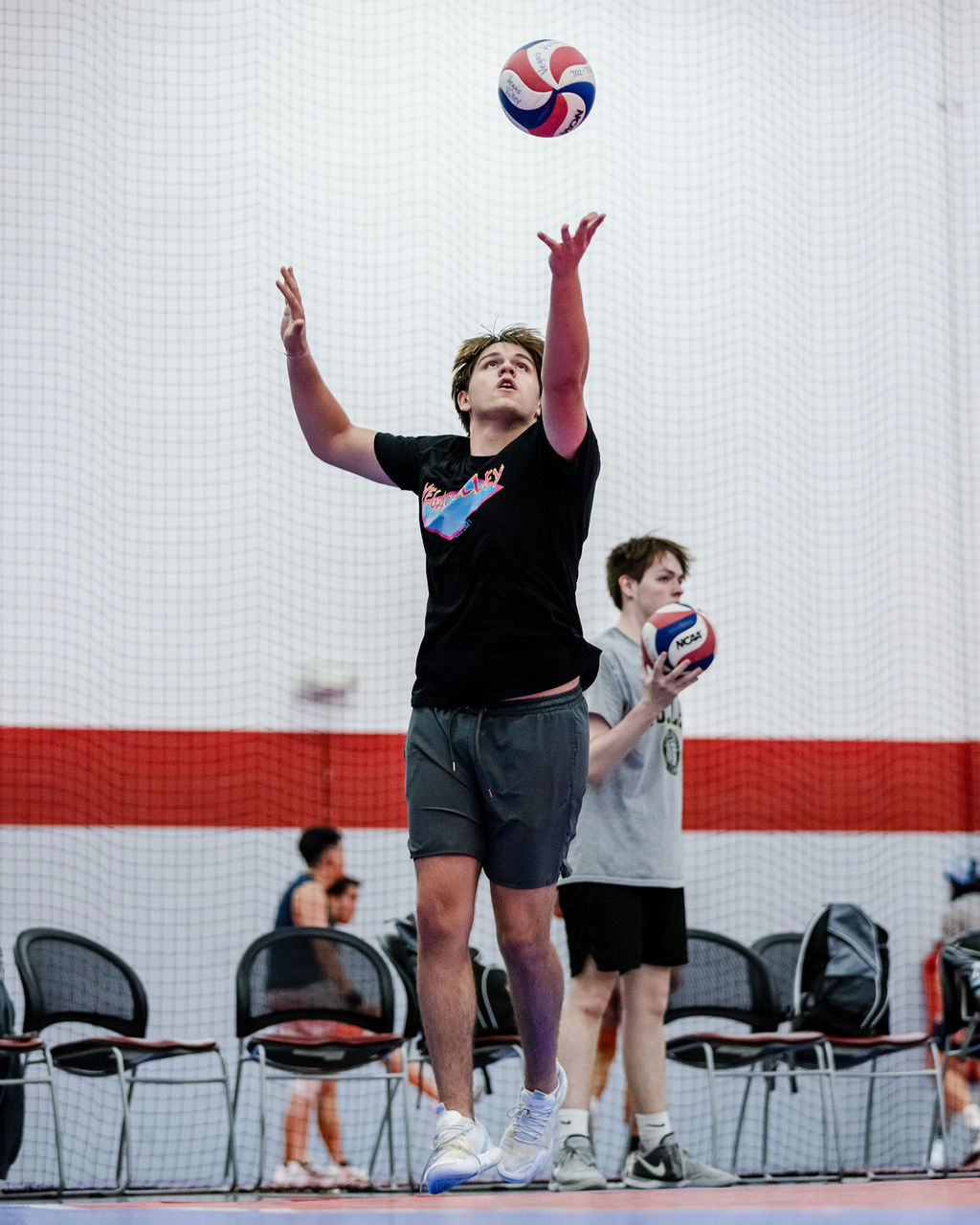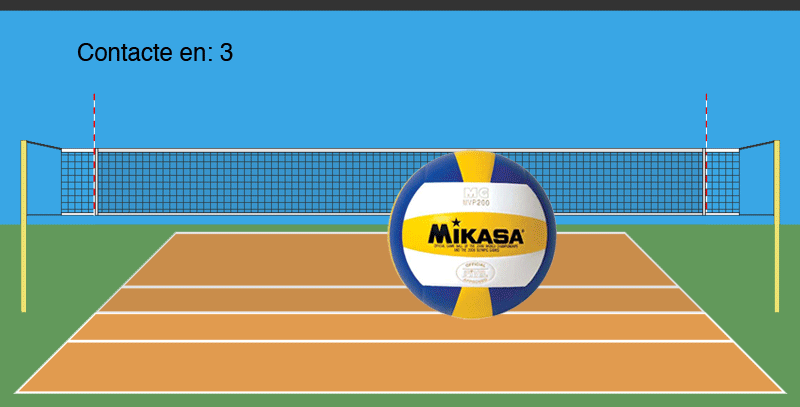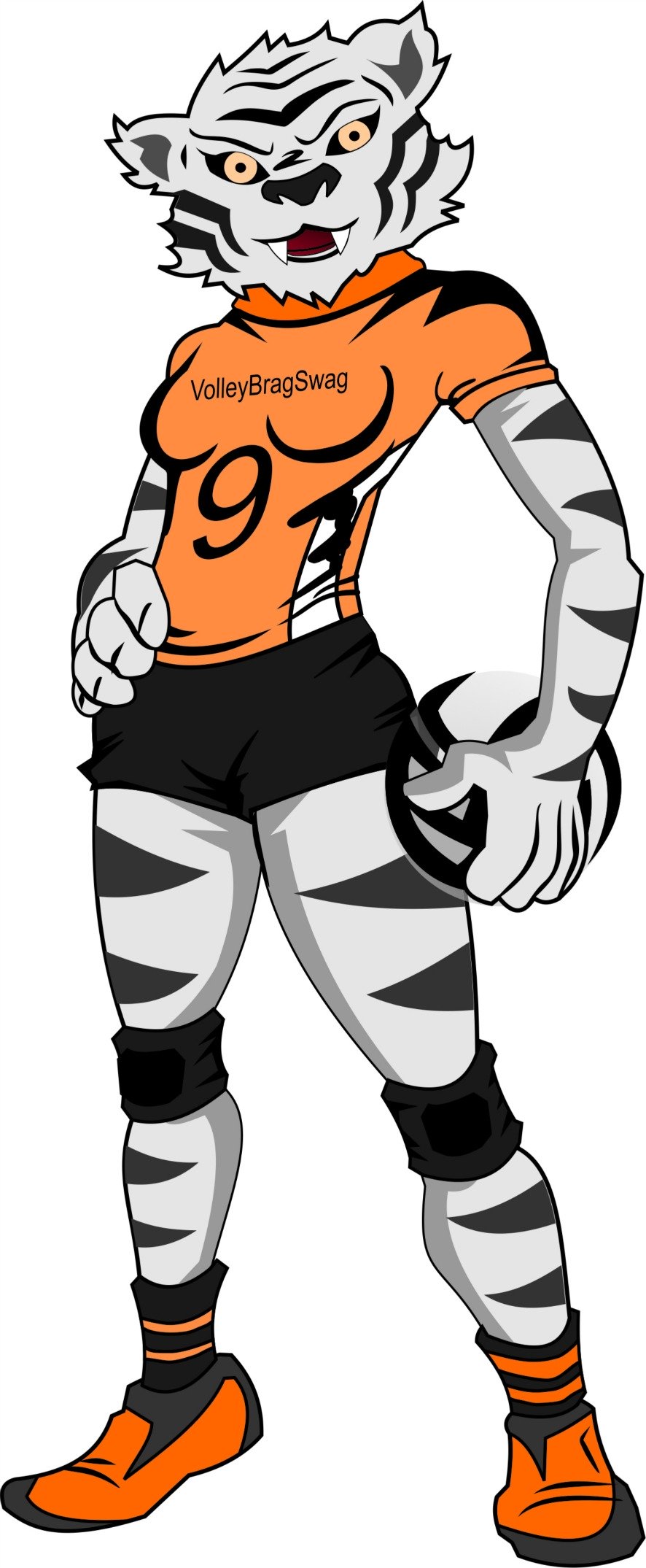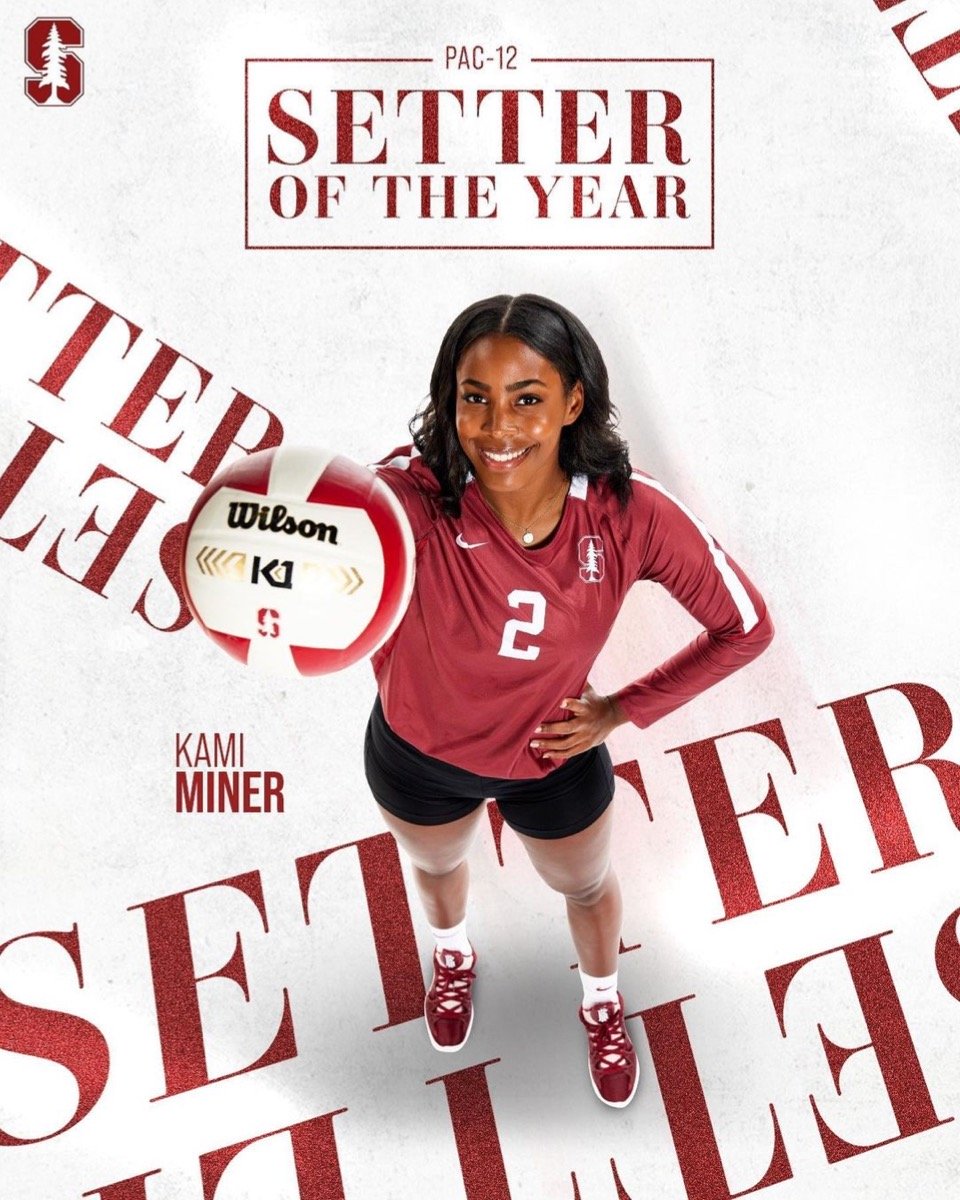- Improve Your Volleyball with Coach April
- Basic Volleyball Skills for Beginners
- The Volleyball Serve
 Dear Volleyball Mom,
Do You Know What Sets My Private Volleyball Training Apart From Anyone In Vegas?
I invite You to read what my private volleyball training mission says before considering hiring me as a private volleyball coach because I'm not available for everyone.
Dear Volleyball Mom,
Do You Know What Sets My Private Volleyball Training Apart From Anyone In Vegas?
I invite You to read what my private volleyball training mission says before considering hiring me as a private volleyball coach because I'm not available for everyone.Volleyball Serve Use A Float, Jump Or Overhand Serve To Start A Rally
The overhand, underhand or jump volleyball serve is used to start a rally after the ref blows the whistle for the player in Zone 1 behind the service line.
What Is A Good Serve in Volleyball?
The volleyball serve is your first opportunity to score a point and it's the one individual skill in volleyball that you have complete control of.
Addi getting 100 overhand serve reps in on Super Bowl Sunday working on her standing float serve down the line.
Focusing on starting with hips open to the wall to her right, a consistent toss and a smooth arm swing when contacting the ball with the middle of her hand to the middle of the ball.
Addi works on her jump float serve toss consistency while aiming for a deep line serve to Zone 5.
From the moment
- you pick up the ball behind the service line,
- to once it leaves your hands for the toss after the ref blows the whistle
you literally have the ability to score points for your team, if you use the correct volleyball serving technique.
The serve is often the first offensive skill a player usually learns.
If you can't serve the ball, you can't play the game, since throwing the ball over the net isn't allowed.
Syd works on improving her standing float serve during private training with me.
Different Types of Volleyball Serves
There are various types of volleyball serves that players can utilize.
Here are a few commonly used serve types:
Volleyball Serves - The Float Serve
When you look at my players you'll see (or should see) that all of them have the same serving form and technique. We work hard on -
- keeping the elbow close to the ear
- watching their hand when they contact the ball
- watch how their hips are facing where they want to serve the ball (we were working on serving line to zone 5)
- all of them are or will contact the ball at the same spot on the ball, so the upper part of the palm just below the knuckles contact the middle panels of the ball
- working on a consistent toss on every serve so I know exactly where to contact the ball
Hold the ball with a light grip in your non serving hand which will be your tossing hand, almost like you're cradling it.
Toss the ball two feet up in the air and one foot in front of your front foot which is pointed in the direction of where you want the ball to be served.
The key is to keep your toss so consistent, that if you toss the ball ten times in a row and let it fall to the ground, it goes up the same height and comes down in the same spot every single time.
As you swing your arm forward, make contact with the middle or lower part of the ball using a firm, flat hand.
Rather than adding topspin or backspin, focus on a clean, direct hit.
The primary benefit of the float serve is its ability to disrupt the opposing team's reception.
This can make it challenging for passers to read the trajectory and adjust their positioning accordingly.
Volleyball Serves
The Jump Serve
Are you a tough volleyball server?
As a tough volleyball server, your job is to be comfortable serving anywhere and anyone from behind the service line with pace and precision in order to score points.
When you do your volleyball drills for serving practice you want to do tons of reps to every single one of the six positions on the court.
You want to be able to hit those targets from anywhere behind the service line.
Targets to aim for during your volleyball drills for serving:
-serve seams
-serves the sidelines
serve outside hitters deep in the court
Some players think that being a tough volleyball server means you need to really be sneaky and try and fake out the serve receive by not showing where you are going to serve.
On the contrary I say...let everybody know where you are going to serve.
Face Your Target.
The jump serve is a dynamic and powerful serving technique that can give you a strategic advantage on the court.
To execute a jump serve effectively, start by standing behind the service line and take a few steps back for your approach.
My College Breakfast Club training group working on jump float serve skills specifically hand to ball and toss consistency.
step - toss - step close - launch yourself in the air
As you reach the peak of your approach, jump off both feet, extending your hitting arm back and swinging it forward forcefully.
Make contact with the ball at the highest point of your jump, ideally with a firm hand and a snapping motion of the wrist.
The primary advantage of the jump serve is the added power and velocity it can generate so once the ball passes over the net it spins to the ground quickly.
With a well-executed jump serve, you can put significant pressure on the opposing team's serve reception, making it difficult for them to control the ball and initiate a strong offensive play.
To maximize the effectiveness of your jump serve, consider the following tips:
1. Timing
Focus on timing your approach jump to ensure you contact the ball at the highest point of your jump.
Practice the timing and coordination of your steps, arm swing, and jump reach to achieve a seamless motion with no pauses or hesitations in your approach to the ball.
2. Generating Height
Work on developing explosive leg power to achieve the maximum height in your jump.
I like to tell my clients to attack the floor with the last two steps of your approach in order to launch yourself higher in the air using your leg muscles to drive upward forcefully to gain additional height during the serve.
3. Generating Velocity
To generate velocity, focus on a strong back swing with both arms and quickly and aggressively swing both arms forward before pulling the elbow of the serving arm back keeping the elbow close to your ear while turning the palm of the hand towards the ball before you make contact with the ball.
Use the full range of motion in your hitting shoulder and snap your wrist to add speed to the serve.
4. Practice and Consistency
Like any skill, the jump serve requires practice and consistency to refine your technique and develop accuracy and control.
Set aside practice sessions to work on your jump serve and strive for repetition and refining your technique.
By mastering the mechanics of the jump serve and incorporating it into your game strategy, you can become a formidable server and disrupt the opposing team's serve reception, giving your team a significant advantage.
Volleyball Serves
Topspin Serve
The topspin serve is a powerful serving technique that can put significant pressure on the opposing team's reception.
It involves imparting topspin rotation on the ball, resulting in a downward trajectory when the ball crosses the net.
To execute a topspin serve effectively, start by standing behind the service line and ensure a firm grip on the ball.
Position yourself with your feet shoulder-width apart and your non-dominant foot slightly in front of the other.
The toss should be high enough to allow you to strike the ball at its highest point. This is crucial for generating the desired topspin.
When making contact with the ball, strike it with a firm hand and snap your wrist downward and slightly across the ball's center.
This action imparts topspin rotation, causing the ball to dip and drop rapidly towards the opposing team's court.
The topspin serve offers several advantages.
The combination of speed and the ball's steep descent can lead to difficulties in accurately receiving the serve.
Additionally, the topspin can cause the ball to bounce off the passer's arms with greater velocity, increasing the chances of an uncontrolled pass or an error on their part.
To refine your topspin serve and enhance its effectiveness, consider the following tips:
1. Consistency
Focus on consistent toss placement and contact point to ensure a clean and powerful strike. Practice the toss and striking motion repeatedly to develop muscle memory and consistency.
2. Timing
Pay attention to the timing of your toss and approach, ensuring optimal coordination between the two. Timing is crucial for achieving the desired contact point.
3. Wrist Snap
Emphasize a quick and forceful snap of the wrist at the moment of contact to generate maximum topspin rotation. Practice the wrist snap motion separately to improve control and power.
4. Practice Variations
Experiment with varying the pace, placement, and angle of your topspin serves.
This can add an element of unpredictability, making it even more challenging for the opposing team to receive your serves effectively.
By mastering the technique of the topspin serve, you can become a formidable server and create opportunities for your team by disrupting the opposing team's reception.
Do You Follow Me on Pinterest?
Follow me on Pinterest Volleybragswag to improve your game even faster!
I share alot of individual, partner and easy-to-do volleyball serving drills we do in class with my followers.
Many of these volleyball practice drills you can do at home by yourself or try at your next practice with your teammates.
If you're a B team or JV player trying to make varsity next year...your goal should be to complete 1000 reps a day of at least three of the basic skills on your own...volleyball passing, serving and setting should be at the top of the list.
The Volleyball Serve
Where Do You Go From Here?
Your three options are:
- You can learn more about Serving by visiting the related links below.
- Follow the suggested reading on our Sitemap page Learning How To Play (Sitemap)
- Or visit the pages in the How to Play Volleyball section in the drop down menu at the top of the page to get started.
- Before leaving this page Say "Hi" to Miss Tattoo the Tiger wearing the #9 jersey below. Miss Tattoo is the starting defensive and serving specialist for the All Beast VolleyBragSwag All Star team.
Meet Tatoo the Tiger, Serving Specialist on VolleyBragSwag's All Beast Team
SUSCRIBE
To My Email Newsletter Below!
From Lady Vol to Legend: Coach April Produces Powerful Passionate Players...is that you?
TOURNAMENT CHAMPIONS!
A-1 Vegas Volley VBC
In It To Win It Tournament
May 2 - 4, 2025 Tournament
Gold Medalists
18s Premier Division
 Making A-1 Vegas Volleyball history as the very first TOURNAMENT CHAMPIONS! In the In It To Win It Tournament,
May 2-4, 2025 Tournament,
A-1 Vegas Volleyball Club
Gold Medalists, 18s Premier Division
Making A-1 Vegas Volleyball history as the very first TOURNAMENT CHAMPIONS! In the In It To Win It Tournament,
May 2-4, 2025 Tournament,
A-1 Vegas Volleyball Club
Gold Medalists, 18s Premier DivisionWhat Are You Looking For?

Hi there!
Thanks for stopping by. Hope you learned something today that will help you reach your volleyball goals.
Be sure to subscribe to my email newsletter so you can learn more each week!
Stay strong! Stay motivated!
-Coach April

SUSCRIBE
to my email newsletter below!
Vegas Volleyball's Unsung Heroes: Celebrating Moms with Peace Love Volleyball Shirts
Ready to energize your volleyball mom journey?
Subscribe to my 'Producing Powerful Passionate Peaceful Players' email list above on ImproveYourVolley.com.
You'll receive energy-boosting tips, exclusive insights from me, Coach April Chapple on maintaining momentum in volleyball.
Let's power up the Vegas volleyball scene together!
Recent Articles
-
Take A Coach April Volleyball Lesson: Train with a Champion in Vegas
May 07, 25 03:55 PM
Las Vegas volleyball lessons with proven results. Coach April's personalized training helped her 18s team win gold - now let her elevate your volleyball game. -
Peace Love and Volleyball: Vegas Moms: Real MVPs Behind Every Player
Apr 28, 25 09:02 PM
Discover how Coach April's Peace Love and Volleyball revolution honors Vegas volleyball moms, unsung heroes transforming local volleyball one player at a time. -
Types of Volleyball Hits: 5 Attack Techniques I Teach My Club Hitters
Apr 27, 25 01:11 AM
Discover in this article, how I show you the different types of volleyball hits I teach my Vegas Volley club 18s players-from basic spikes to strategic shots.
